Related Research Articles
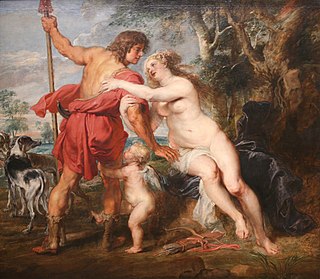
The Baroque is a style of architecture, music, dance, painting, sculpture and other arts that flourished in Europe from the early 17th century until the 1740s. In the territories of the Spanish and Portuguese empires including the Iberian Peninsula it continued, together with new styles, until the first decade of the 1800s. It followed Renaissance art and Mannerism and preceded the Rococo and Neoclassical styles. It was encouraged by the Catholic Church as a means to counter the simplicity and austerity of Protestant architecture, art and music, though Lutheran Baroque art developed in parts of Europe as well.

Baroque architecture is a highly decorative and theatrical style which appeared in Italy in the early 17th century and gradually spread across Europe. It was originally introduced by the Catholic Church, particularly by the Jesuits, as a means to combat the Reformation and the Protestant church with a new architecture that inspired surprise and awe. It reached its peak in the High Baroque (1625–1675), when it was used in churches and palaces in Italy, Spain, Portugal and France, and Austria. In the Late Baroque period (1675–1750), it reached as far as Russia and the Spanish and Portuguese colonies in Latin America, Beginning in about 1730, an even more elaborately decorative variant called Rococo appeared and flourished in Central Europe.

Santa Maria sopra Minerva is one of the major churches of the Roman Catholic Order of Preachers in Rome, Italy. The church's name derives from the fact that the first Christian church structure on the site was built directly over the ruins or foundations of a temple dedicated to the Egyptian goddess Isis, which had been erroneously ascribed to the Greco-Roman goddess Minerva.

Barletta is a city, comune of Apulia, in south eastern Italy. Barletta is the capoluogo, together with Andria and Trani, of the Province of Barletta-Andria-Trani. It has a population of around 94,700 citizens.

St John's Co-Cathedral is a Roman Catholic co-cathedral in Valletta, Malta, dedicated to Saint John the Baptist. It was built by the Order of St. John between 1572 and 1577, having been commissioned by Grand Master Jean de la Cassière as the Conventual Church of Saint John.
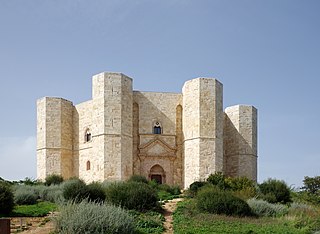
Andria is a city and comune in Apulia. It is an agricultural and service center, producing wine, olives and almonds. It is the fourth-largest municipality in the Apulia region and the largest municipality of the Province of Barletta-Andria-Trani. It is known for the 13th-century Castel del Monte.
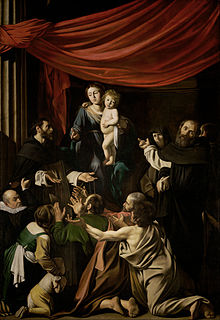
The Madonna of the Rosary is a painting finished in 1607 by the Italian Baroque painter Caravaggio, now in the Kunsthistorisches Museum in Vienna. It is the only painting by Caravaggio that could be called a standard Baroque altarpiece.

Cosimo Fanzago was an Italian architect and sculptor, generally considered the greatest such artist of the Baroque period in Naples, Italy.

Stigliano is a town and comune in the province of Matera, in the Basilicata region of southern Italy.
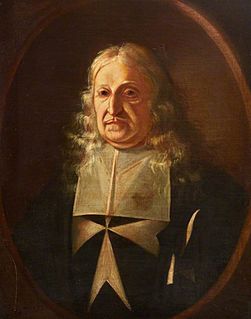
Fra Gregorio Carafa was a nobleman from the House of Carafa and the 61st Grand Master of the Order of Saint John, from 1680 to his death in 1690.
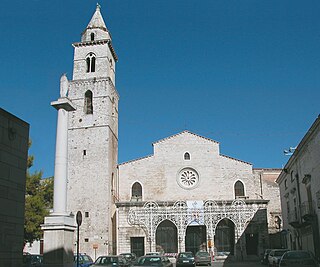
Andria Cathedral is a Roman Catholic cathedral in Andria in Apulia, Italy, which up to 2009 was in the Province of Bari but from then onwards part of the newly formed Province of Barletta-Andria-Trani. It is dedicated to the Assumption of the Virgin Mary and is the seat of the Bishop of Andria.

The House of Carafa or Caraffa is a noble Neapolitan family of Italian nobles, clergy, and men of arts, known from the 12th century. The family rose to prominence during the 14th century, under the Angevin rule in Naples and established itself as one of the leading noble families of southern Italy in the 15th century under the Aragonese dynasty. Across the time, the family split in many lines, the most important being the Princes of Roccella, the Dukes of Andria, the Princes of Stigliano, the Dukes of Maddaloni, the Dukes of Nocera and the Dukes of Noja. The family gave sixteen cardinals to the Church, including one pope, Paul IV.

The Palazzo of Monte di Pietà is a historic building located along the lower decumanus of Naples, Italy. The lower decumanus is also known as Spaccanapoli street. It housed the Mount of Piety or Christian bank in Naples.
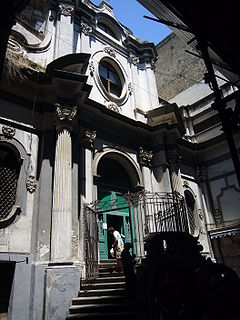
San Nicola a Nilo is a Baroque-style Roman Catholic church on Via San Biagio dei Librai #10, in the center of Naples, province of Campania, Italy. It stands across from the Palazzo Diomede Carafa.

The Auberge d'Italie is an auberge in Valletta, Malta. It was built at various stages in the late 16th century to house knights of the Order of Saint John from the langue of Italy, and it originally had a Mannerist design by Girolamo Cassar and several other architects. The building continued to be modified throughout the course of the 17th century, with the last major renovation being carried out in the 1680s during the magistracy of Gregorio Carafa, giving the building a Baroque character.
Ettore Carafa d'Andria, the Count of Ruvo was an Italian soldier and republican patriot, executed after the fall of the Parthenopean Republic. His courage, idealism, and resolute optimism created in Ettore an image of the Italian martyr for following generations involved in the struggle for more democratic structures and an Italian nation.
Margherita Pignatelli Aragona Cortés, duchess d'Andria (1740-1810) was an Italian courtier.

The Church of St Roque is a 17th century Baroque church located in Valletta, Malta. The church is the official parish church of the Romanian Orthodox Church in Malta and is subsequently used for Orthodox Divine services. The Romanian Orthodox parish is dedicated to the Birth of John the Baptist. The church still remains officially owned by the Roman Catholic Archdiocese of Malta.
Decio Carafa (1556–1626) was an Archbishop of Naples who had previously served as papal nuncio to the Spanish Netherlands (1606–1607) and to Habsburg Spain (1607–1611).
San Francesco is a Gothic-style, former Roman Catholic church located in the town of Andria, province of Barletta-Andria-Trani, Apulia, Italy.
References
- ↑ Comune of Andria, tourism entry.
| This article about a church building or other Christian place of worship in Italy is a stub. You can help Wikipedia by expanding it. |